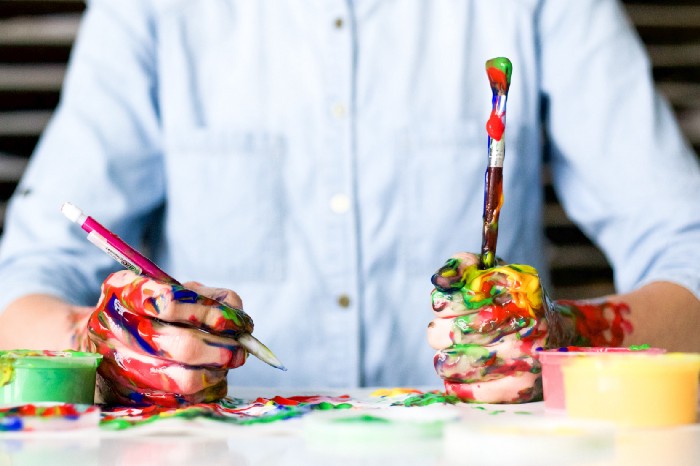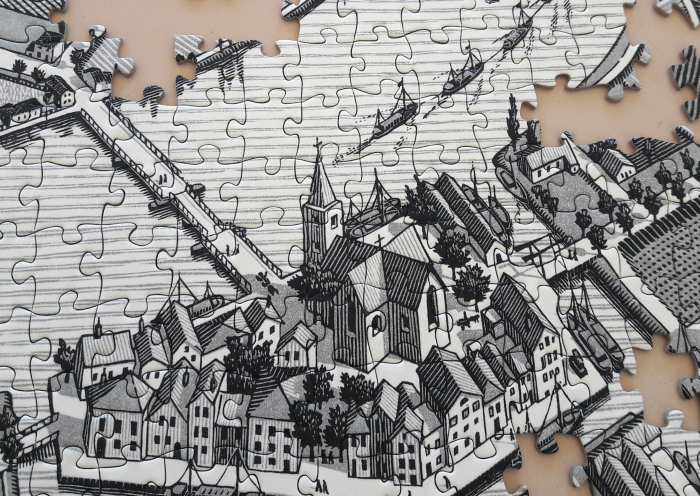Logic tells us the more time we spend on a task the more we’ll get more done. When it comes to meeting a deadline, it can be tempting to keep going, even when we feel fatigued. However, for creative tasks, this could be the worst approach. Straight forward, mundane, repetitive tasks that require less brain-power can be accomplished by simply plugging away. When it comes to creative jobs, pushing ahead when you’re tired is unlikely to help. Creativity is a capricious colleague. To have her on your side, you need time and space.
Creativity and our brain
Creativity doesn’t come from a single area of our brain. Multiple parts need to be working in concert for optimal creativity. Our frontal cortex — the more recently evolved, high-energy part of our brain — along with the hippocampus — part of the older limbic system, and the basal ganglia which plays a role in our movement, emotions and behaviour all need to work together with the help of our brain’s white matter (which provides the connections between each area).
It takes a lot of energy to keep the neurons firing in all areas. Our body and brain are designed to conserve energy wherever and whenever they can. It’s still geared for survival in the wild. That means the energy required to keep frontal cortex firing is finite. When we get tired, our system prioritises energy for parts of our brain and body that are tied to staying alive. That means shutting down the high-energy consuming parts (frontal cortex) and using our more energy-efficient areas (limbic region) to keep us going.
While that’s great for conserving energy, it’s not good news for keeping creativity flowing or coming up with new, inventive solutions. We’re more likely to be recycling old ideas and then justifying them as being new because of the slightly different application. In short, creativity is a high-energy-consumption activity.
Short breaks for boosting creativity
One way to improve our creativity is to take regular breaks throughout the day. Instead of trying to maintain focus for hours on a single task (painting, writing, problem-solving, etc.) take a break. Of course, there are different ways to do this. What works for one person, won’t work for another. So, choose the type and timing of your breaks to suit your personal style, personality and specific creativity needs.
Turn to something else. When you’re not moving forward with your task — the forest you’re painting isn’t working. Or reframing the features as benefits just don’t sound right. Or the simple solution to the problem you’re working on won’t reveal itself. Whatever the creative task may be, when you find yourself wading through treacle, switch it up. Turn to a different task and preferably not a creative one. Do a little filing. Add some data to a spreadsheet. Respond to some emails or complete some simple planning tasks. The idea is to put a little space between the creative problem you’ve been working on and your focus. Research indicates broadening your attention can stimulate your creativity.
Limit your stimulus. It’s easy to get distracted when our creative energy flags. The problem is that can just exacerbate the issue. Instead, try limiting the stimulation around you so you become a little bored. You can daydream a little, but don’t think about the task at hand. Sit back and let your mind wander — think about your next holiday, what you’re going to cook for dinner, or reminisce on the great break you had last year with friends. A little boredom and daydreaming can boost your creativity. When you get back to your work, inspiration is more likely to come knocking.
Walk it off. When inspiration is eluding you, get up and head out for a walk. Where you walk can influence the state of mind you encourage. A walk in nature can induce a calmer state of mind, whereas walking through a busy urban area can excite your mind and amplify engagement. If you’re able to choose, consider the frame of mind you need for your creative task and choose your walking environment accordingly.
Other types of short breaks to increase your creativity include quick meditations from 5–15 minutes, surrounding yourself with the colour blue, rocking out to some tunes, and just stopping for a stretch and healthy snack to recharge the body with the mind. Any of the breaks noted above should help improve your energy throughout the day. Mix it up, choose the ones that gel with your personality and try to schedule your most creative tasks for parts of the day when you’re freshest and most energised.
Longer creative vacations
A short break is all very well and good, but a longer break is a great way to inspire and reinvigorate your enthusiasm for well-worn paths of creativity. Even people with cool creative jobs can get a little tired of the day-in, day-out pull to come up with something new. The way to get around this is to take a total break from that avenue of creativity. It’s a similar idea to taking an exercise break. Athletes rest between training muscle groups to help build their strength and resilience. Creatives should take longer breaks to rest their ‘creative muscles’ and boost inspiration. Here are a few ideas to help you do just that…
Travel somewhere new. When we go somewhere completely new, we expose ourselves to diverse situations — new people, new flavours, and new activities. This gives our minds new stimuli to play with. Immersing yourself in different cultures — new foods, different sounds, and unusual ideas — fires different synapses and forges new connections in your brain. In turn, it enhances our cognitive flexibility, creativity and can lead to ah-ha moments in our usual creative work.
Staycation stimulation. Travelling far away to immerse yourself in a different culture isn’t always possible. Finances or other restrictions might make a break closer to home more realistic. The good news is a ‘staycation’ can still boost your creativity. Head for natural surroundings where you can try forest bathing and get lots of exposure to natural sunlight. Or try a city break where you can take in museums and art galleries. Woodland spaces and natural light have been linked to an increase in creativity, immersing yourself in other’s artworks can inspire your own works.
A creative vacation. If you can’t get away, try giving yourself a creativity vacation. If you’re a designer, try putting down the design work for a day — or even half a day — and giving fiction writing a try. If you’re a writer, give painting a go. If you paint for a living, take a week off to dance. The idea here is to create space in your mind away from your usual creative outlet and channel it in a different direction.
When you go back to your usual work, it will be with a new perspective and related skills that can spark new inspiration. Switching too often can have detrimental effects for your creative juices but a short creative holiday can build creative muscle. Look at the alternate outlet as a fun escape, don’t take it too seriously and let yourself play in the new medium for best results.

Create something just for fun. Creating for a living is great. The problem is, it can sometimes stifle our originality or willingness to step into the unknown. A personal, uncommissioned project is one way around this. You’re still using your usual creative expertise, but applying it in a way that you want to, rather than a way you’re being paid to. This can give you the freedom to try something new, chase a different goal or tread an uncommon path. When you get back to your paid creative work it may well be with more vigour, enthusiasm and inspiration.
Choose your moments
Sometimes, taking a break from what you’re doing is going to harm your work. If you’re in a state of flow, it’s best to stay there. Don’t get up and move to something different when your mind and body are in sync to give you the focus and inspiration needed to have beautiful breakthrough moments.
When things are feeling a little up-hill and your mind is more lethargic, it’s time to take the cue and give yourself a break. Short breaks through your day should improve your energy and with it, your creativity. Longer breaks are great for filling up your inspiration reserves. While you might not immediately apply the inspiration found on holiday to the project you’re working on, it can be stored for future use.
By utilizing breaks well you can sustain your creativity for longer, restore your reserves of inspiration, and dance with your muse in new and delighting ways.



Recent Comments